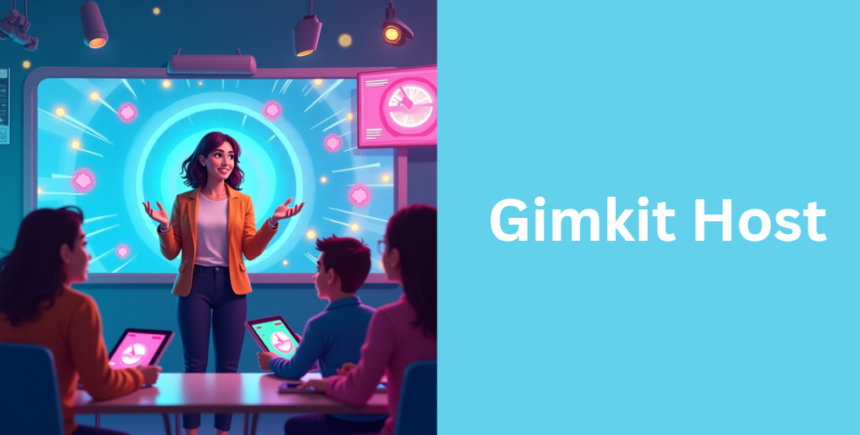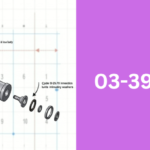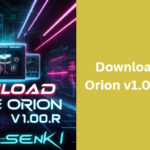In today’s dynamic educational landscape, engaging students and creating an interactive learning environment is essential. Gimkit host roles offer educators an innovative way to turn lessons into game-based experiences that captivate learners. This guide provides a detailed, step-by-step approach to help you understand, set up, and excel as a gimkit host.
Understanding Gimkit and Its Unique Value
Gimkit is more than just a quiz tool. It was created to enhance student engagement through gamification, making learning interactive and enjoyable. Unlike traditional teaching methods, Gimkit’s game-based approach offers real-time feedback and rewards, motivating students to participate actively.
Educators have discovered that when a gimkit host takes charge, students are more involved, and learning outcomes improve. The platform stands out because it offers multiple game modes, customizable kits, and real-time analytics, all of which empower teachers to adapt the experience to their classroom needs.
What Makes Gimkit Stand Out?
Gimkit is known for its simplicity and innovation. Its intuitive interface, combined with diverse game modes, makes it accessible for teachers and engaging for students. The platform allows educators to create custom kits that include multimedia elements, ensuring that each session is not only educational but also visually stimulating. Moreover, the instant feedback provided during games helps both the teacher and the students gauge understanding in real time.
Getting Started as a Gimkit Host
Before you dive into hosting live games, it’s important to set up your Gimkit account properly. Creating your profile and familiarizing yourself with the dashboard are the first steps toward becoming an effective gimkit host.
Creating Your Account and Profile
Start by signing up on the Gimkit website. The registration process is straightforward and requires basic information such as your name, email address, and a password. Once registered, you can set up your profile, which will be visible to students when they join your games. This step is crucial as it establishes your identity as the facilitator of engaging learning sessions.
Navigating the Gimkit Dashboard
The dashboard is your control center as a gimkit host. It provides access to various features such as kit creation, game settings, and analytics. Spend some time exploring each section to understand how everything is organized. Familiarity with the dashboard will help you manage live sessions more effectively and quickly troubleshoot any issues.
Key Terminology and Concepts
Understanding the platform’s language is essential. Terms like “kit,” “game mode,” “power-ups,” and “live game” form the basis of your interactions with the platform. Knowing these concepts will help you communicate clearly with your students and ensure that everyone is on the same page during a session.
Creating and Customizing Your Kits
A kit is the backbone of any Gimkit session. It is a collection of questions and content that you will use to challenge your students. Creating a kit tailored to your lesson plans can significantly enhance the educational experience.
What is a Kit?
A kit is a set of questions designed around a particular topic or lesson. As a gimkit host, you have the flexibility to create kits that align perfectly with your curriculum. Kits can include images, videos, and detailed explanations to ensure that students not only answer questions correctly but also understand the underlying concepts.
Step-by-Step Kit Creation Process
To create a kit, log in to your Gimkit dashboard and select the option to build a new kit. Enter your questions, possible answers, and add any multimedia elements that will support the learning objectives. The process is interactive, and you can preview your kit before finalizing it. This hands-on approach allows you to tailor every detail to meet your students’ needs.
Customization Options
Gimkit offers extensive customization options that go beyond simply adding questions. As a gimkit host, you can set time limits, adjust difficulty levels, and even modify the scoring system. For instance, you may include power-ups that reward quick responses or incorporate bonus questions for extra points. These options not only increase the fun but also help reinforce learning.
Leveraging Templates and Community Resources
If you’re short on time or looking for inspiration, Gimkit provides a library of pre-made kits created by other educators. You can import these templates and then customize them further to suit your teaching style. This feature is particularly useful for new gimkit hosts who are still learning the ropes of kit creation.
Hosting a Live Game: Preparation and Execution
Transitioning from kit creation to hosting a live game is an exciting step. A successful live session requires careful preparation and dynamic execution to keep students engaged.
Pre-Game Setup
Before starting a live game, ensure that all technical aspects are in place. Verify your internet connection, test your audio and video, and prepare any additional materials you may need. A checklist can help ensure that nothing is overlooked. For example, consider the following checklist:
- Confirm stable internet connectivity.
- Test your audio and visual setup.
- Prepare any supplementary teaching materials.
- Brief your students on the process for joining the game.
Configuring Game Options and Modes
Gimkit offers various game modes designed to suit different teaching scenarios. Whether you choose a classic mode for individual play or a team-based mode to encourage collaboration, the settings can be tailored to your lesson objectives. This flexibility allows you to create an experience that is both educational and engaging. For example, in the classic mode, students can compete individually, while team modes promote collaboration and discussion.
Below is a simple table summarizing the main game modes available:
| Game Mode | Description | Ideal For |
|---|---|---|
| Classic | Individual play with a focus on personal achievement and quick thinking. | Competitive environments |
| Team Mode | Group play that encourages teamwork and communication among students. | Collaborative and group work |
| Power-Up Mode | Incorporates bonus elements that reward quick, correct responses with special power-ups. | High-energy sessions |
Sharing the Game Code/Link with Students
Once your game settings are configured, generate a unique game code or link. Share this information with your students so they can join the session. As a gimkit host, it’s important to ensure that the sharing process is smooth and secure to prevent unauthorized access.
Running the Live Game
During the live session, your role is to facilitate the game while keeping an eye on student progress. Monitor the game’s pacing, provide encouragement, and address any issues that arise in real time. This active management is critical in maintaining the energy and ensuring that students remain engaged throughout the session.
Post-Game Analysis and Feedback Collection
After the game, take time to review the performance metrics provided by Gimkit. Analyzing this data can offer insights into student learning and help you identify areas for improvement. Collect feedback from your students to understand what worked well and what could be enhanced in future sessions. This reflective process is a cornerstone of becoming a more effective gimkit host.
Advanced Strategies for Engaging Game Sessions
Beyond the basics, there are advanced techniques that can elevate your live sessions. These strategies focus on maximizing student engagement and incorporating elements that challenge and inspire learners.
Gamification Techniques
Incorporating elements like rewards, power-ups, and leaderboards can significantly boost motivation. By offering tangible incentives for correct answers or quick responses, you encourage a competitive yet collaborative environment. A few creative ideas include:
- Introducing bonus rounds for extra points.
- Awarding virtual badges for achievements.
- Creating dynamic challenges that adapt to the students’ progress.
Dynamic Classroom Management During Live Games
Effective classroom management is essential during live sessions. As a gimkit host, you must balance the flow of the game with the diverse needs of your students. Techniques such as calling on students who are quiet or providing hints during difficult questions can help maintain engagement.
Incorporating Collaborative and Team-Based Challenges
Encouraging teamwork can transform a routine quiz into an engaging learning exercise. By dividing students into teams, you create a collaborative environment where they can discuss and solve problems together. This approach not only reinforces the material but also builds essential communication skills.
Troubleshooting and Support for Gimkit Host Sessions
Even the most well-prepared sessions can encounter technical or logistical issues. As a gimkit host, knowing how to troubleshoot common problems ensures that your session runs smoothly.
Common Issues and Their Solutions
Sometimes technical glitches or connectivity issues can disrupt the flow of a live game. Common problems include lag, unexpected disconnections, or difficulty in accessing the platform. Preparing a troubleshooting guide can help you quickly resolve these issues. For example, if you experience lag, try resetting your internet connection or reducing the number of active devices on the network.
Accessing Help and Support Resources
Gimkit offers a dedicated help center where you can find detailed FAQs, tutorials, and community forums. These resources are invaluable when you encounter issues beyond your control. As a gimkit host, knowing where to turn for help can save you time and ensure that your session remains uninterrupted.
Best Practices for Technical Preparedness
To avoid common pitfalls, maintain a routine check of your equipment and software before each session. This includes regular updates of your browser and ensuring that your system meets the necessary technical requirements. Being proactive can prevent most technical issues and help you focus on delivering an excellent learning experience.
Best Practices and Tips for Effective Gimkit Host Sessions
Achieving excellence as a gimkit host goes beyond technical know-how; it involves engaging teaching practices that maximize student participation and learning.
Maximizing Student Engagement
Keep your students actively involved by continuously encouraging participation and celebrating successes. Whether you’re introducing a new kit or running a live game, ensure that your energy is contagious. Consider incorporating interactive discussions and spontaneous challenges to keep the momentum going.
Time Management and Session Pacing
Balancing the pace of the game with educational content is crucial. Avoid rushing through questions; instead, give students enough time to think and respond while maintaining a steady flow of activity. Effective time management not only sustains interest but also reinforces the learning objectives.
Integrating Gimkit with Other Teaching Tools
For a well-rounded educational experience, consider integrating Gimkit with other classroom tools such as interactive whiteboards, digital textbooks, or learning management systems. This integration can create a seamless learning environment that enhances the impact of your live sessions.
Real-World Case Studies and Success Stories
To illustrate the transformative power of a well-run Gimkit session, let’s explore a few real-world examples. These case studies highlight how different educators have successfully implemented strategies as a gimkit host to boost engagement and improve academic performance.
Case Study: Boosting Engagement in a High School Setting
One high school teacher incorporated live Gimkit sessions into her curriculum and observed a remarkable increase in student participation. By carefully customizing her kits and balancing individual and team challenges, she created an atmosphere where students eagerly anticipated each session. Her success demonstrates the potential of a dedicated gimkit host to turn routine lessons into interactive learning experiences.
Case Study: Enhancing Remote Learning
During the shift to remote learning, another educator used Gimkit to bridge the gap between traditional classroom teaching and online education. By leveraging features such as real-time feedback and collaborative team challenges, he managed to keep his virtual classroom engaged and motivated. This case study reinforces the importance of adaptive strategies for a successful gimkit host in diverse teaching environments.
Lessons Learned from Top Gimkit Host Practitioners
Experienced hosts emphasize the significance of preparation, active engagement, and continuous improvement. Their key takeaways include staying updated with new features, gathering student feedback, and being flexible in adapting the game format to suit varying lesson plans.
Frequently Asked Questions (FAQs)
To further assist you in your journey as a gimkit host, here are some common questions along with detailed answers:
- What is a gimkit host and why is it important?
A gimkit host is an educator who creates and manages live game sessions on the Gimkit platform. This role is essential because it transforms traditional lessons into interactive experiences that foster better engagement and improved learning outcomes. - How do I create and manage a kit?
Creating a kit involves selecting relevant questions, adding multimedia elements, and customizing settings such as timers and scoring. Once created, a kit can be reused and adapted for different classes, making it a versatile tool for any gimkit host. - Which game mode is best for my classroom?
The choice of game mode depends on your teaching objectives. For individual competition, the Classic mode is ideal. If you aim to foster collaboration, a team-based mode can be more effective. The decision should align with the learning goals of your session. - What should I do if I encounter technical issues during a session?
Familiarize yourself with common troubleshooting steps such as checking your internet connection and updating your software. If problems persist, refer to Gimkit’s support resources or community forums for quick solutions.
The Future of Gimkit Host and Gamification in Education
As technology evolves, so does the potential of gamification in education. The role of a gimkit host is likely to expand with emerging trends such as augmented reality, personalized learning experiences, and more sophisticated analytics. Staying current with these innovations will enable educators to continuously improve their teaching methods and adapt to new challenges in the educational landscape.
Conclusion
In summary, this guide has taken you through every aspect of becoming an effective gimkit host. From setting up your account and creating engaging kits to mastering live game sessions and troubleshooting technical issues, you now have the tools and strategies needed to transform your classroom.
By integrating gamification into your teaching methods, you not only boost student engagement but also create a dynamic learning environment that can adapt to future educational challenges. Embrace these practices, and watch as your students become more motivated, interactive, and successful in their learning journeys.
Other Posts Like Gimkit Host
Guide to 03-3951-0-015: Utility Trailer Door Lock Handle Casting











